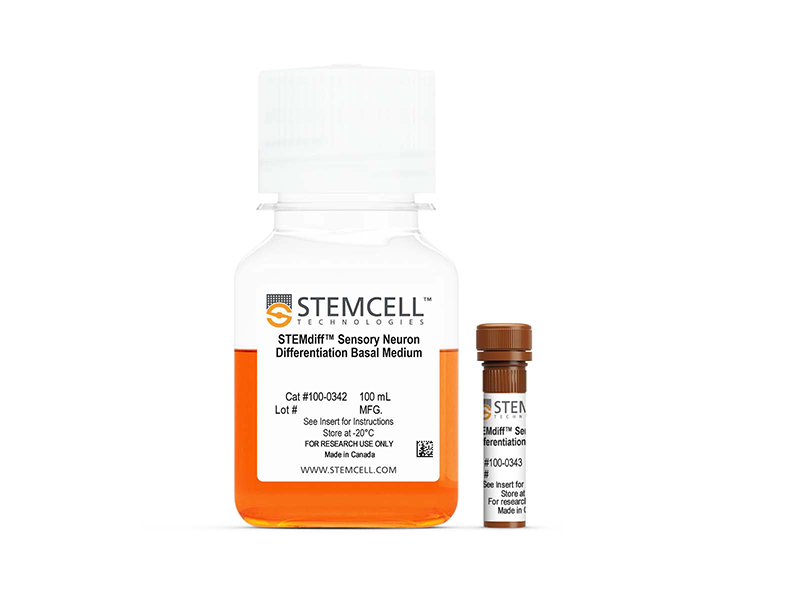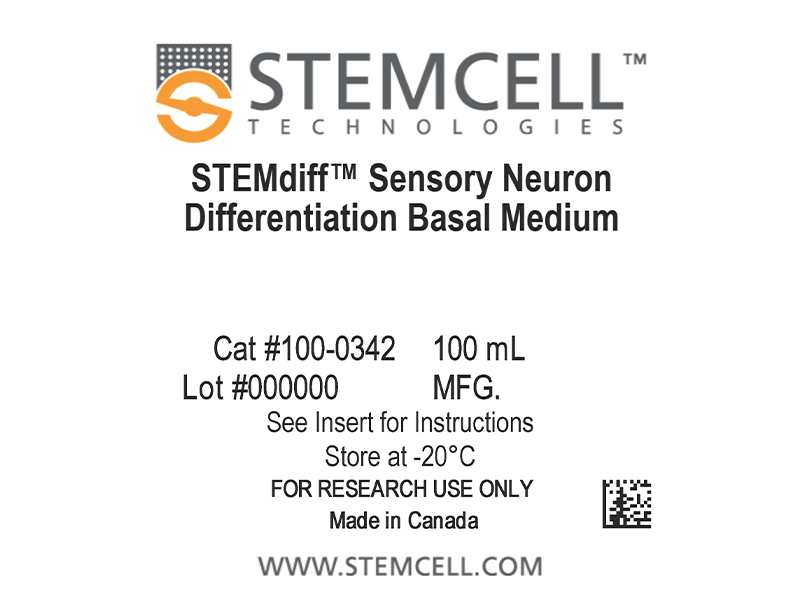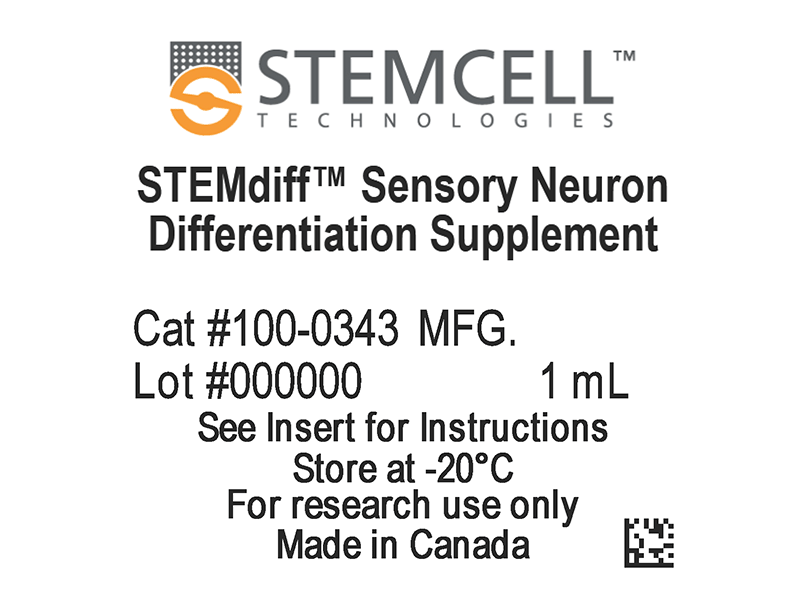STEMdiff™ Sensory Neuron Differentiation Kit
Generate functional, human-specific sensory neurons in a dish with this easy-to-use culture system. After obtaining pluripotent stem cell (PSC)-derived neural crest cells (NCCs) with STEMdiff™ Neural Crest Differentiation Kit, use the serum-free STEMdiff™ Sensory Neuron Differentiation Kit to generate sensory neuron precursors. STEMdiff™ Sensory Neuron Maturation Kit can then be used to maintain and mature the sensory neuron precursors. The resulting cells are BRN3A-positive and more than 70% TUJ1-positive. With the physiological glucose and osmolarity conditions provided by BrainPhys™ as the basal medium, the neurons exhibit activity in response to sensory ligands and changes in temperature. The generated population of functional human sensory neurons can be used for drug discovery and pain research applications.
Generate functional, human-specific sensory neurons in a dish with this easy-to-use culture system. After obtaining pluripotent stem cell (PSC)-derived neural crest cells (NCCs) with STEMdiff™ Neural Crest Differentiation Kit, use the serum-free STEMdiff™ Sensory Neuron Differentiation Kit to generate sensory neuron precursors. STEMdiff™ Sensory Neuron Maturation Kit can then be used to maintain and mature the sensory neuron precursors. The resulting cells are BRN3A-positive and more than 70% TUJ1-positive. With the physiological glucose and osmolarity conditions provided by BrainPhys™ as the basal medium, the neurons exhibit activity in response to sensory ligands and changes in temperature. The generated population of functional human sensory neurons can be used for drug discovery and pain research applications.
Scientific Resources
Product Documentation
| Document Type | 产品名称 | Catalog # | Lot # | 语言 |
|---|---|---|---|---|
| Product Information Sheet | STEMdiff™ Sensory Neuron Differentiation Kit | 100-0341 | All | English |
| Safety Data Sheet 1 | STEMdiff™ Sensory Neuron Differentiation Kit | 100-0341 | 全部 | English |
| Safety Data Sheet 2 | STEMdiff™ Sensory Neuron Differentiation Kit | 100-0341 | 全部 | English |
Product Applications
This product is designed for use in the following research area(s) as part of the highlighted workflow stage(s). Explore these workflows to learn more about the other products we offer to support each research area.
Data and Publications
数据
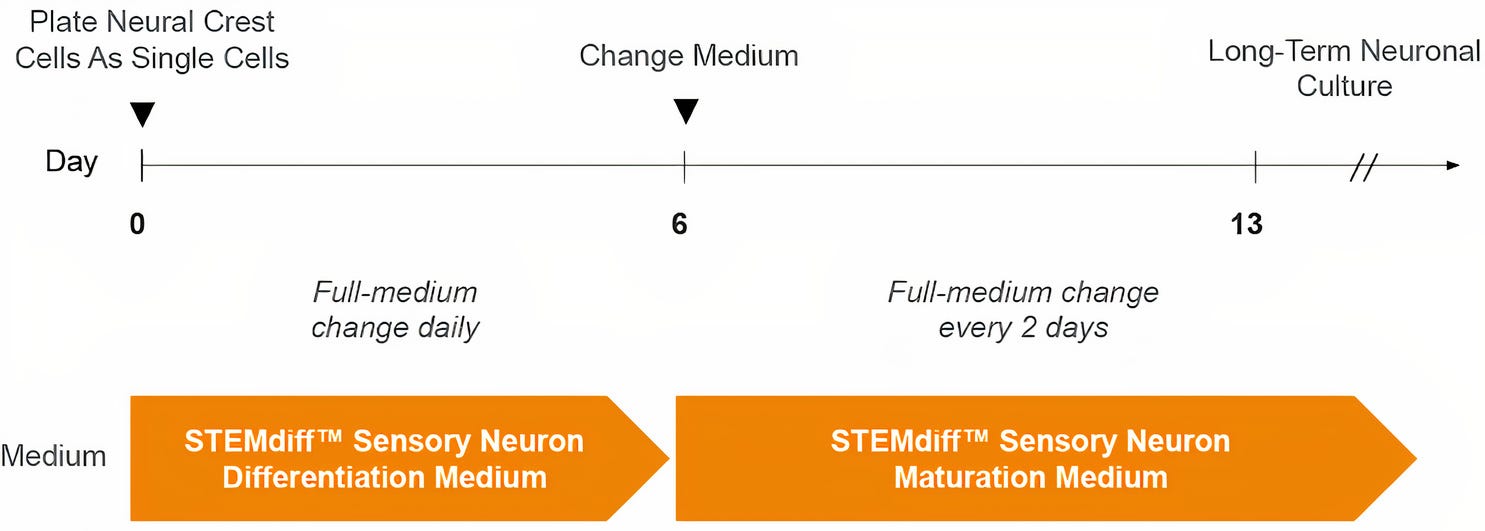
Figure 1. Schematic for the STEMdiff™ Sensory Neuron Culture System Protocol
Sensory neuron precursors can be generated in 6 days from hPSC-derived neural crest cells. For the generation of neural crest cells, see documentation for STEMdiff™ Neural Crest Differentiation Kit (Catalog #08610). For the maturation of sensory neuron precursors to sensory neurons, see the PIS.
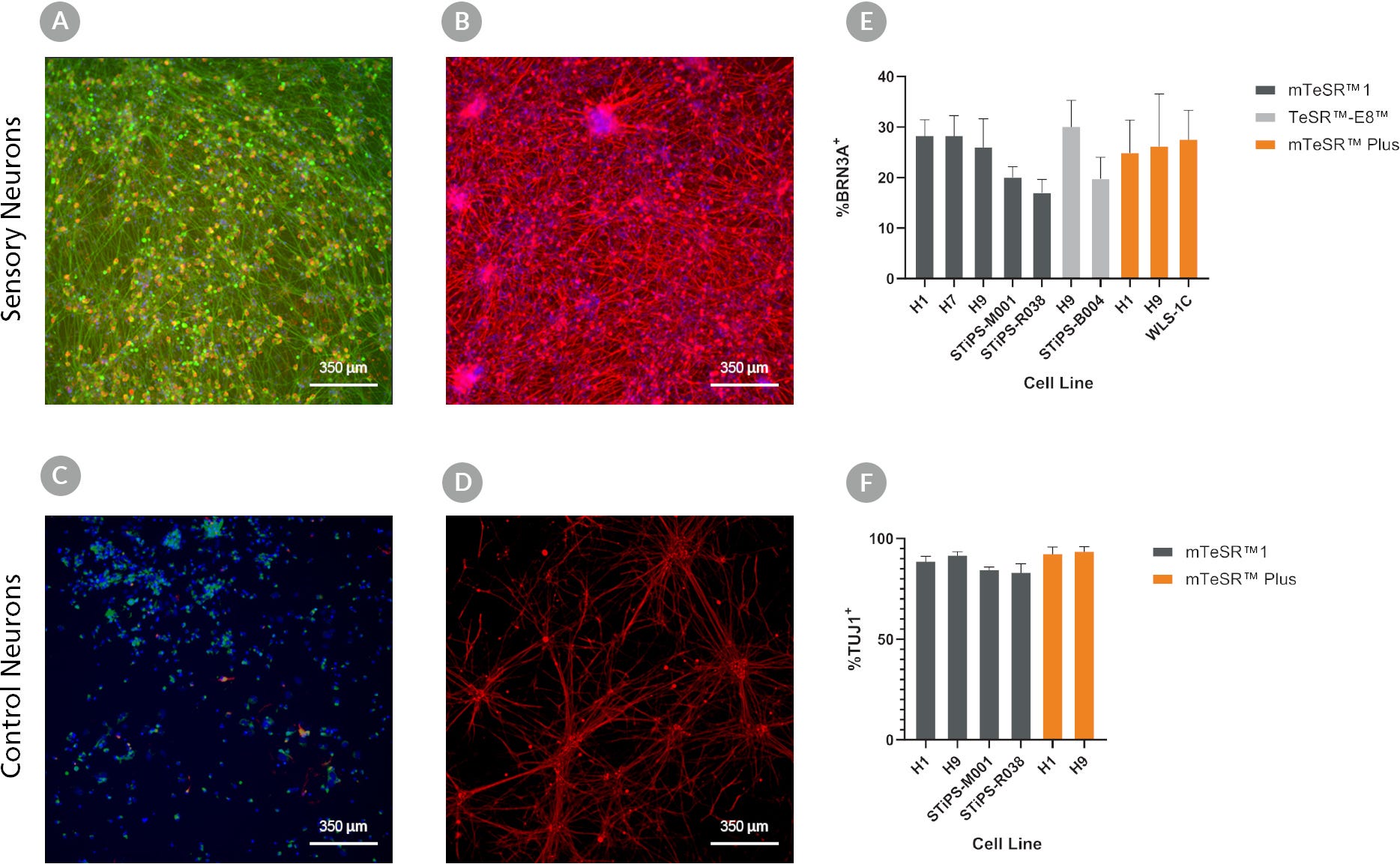
Figure 2. STEMdiff™ Sensory Neuron Kits Promote Differentiation Across Multiple Embryonic Stem and Induced Pluripotent Stem Cell Lines
NCCs generated from hPSCs in mTeSR™ Plus using the STEMdiff™ Neural Crest Differentiation Kit were differentiated and matured to sensory neurons using the STEMdiff™ Sensory Neuron Differentiation and Maturation Kits. (A) Sensory neurons were generated after hPSC-derived NCCs were cultured with the STEMdiff™ Sensory Neuron Differentiation Kit for 6 days and then the STEMdiff™ Sensory Neuron Maturation Kit for 6 days. The resulting cultures contain a population of cells expressing sensory neuron markers peripherin (green) and BRN3A (red) along with (B) neuronal marker class III β-tubulin (TUJ1, red). (C) Midbrain neuron controls generated with STEMdiff™ Midbrain Neuron Differentiation and Maturation Kits do not have detectable peripherin (green) or BRN3A (red) expression, although they express (D) neuronal marker class III β-tubulin (TUJ1, red). Nuclei are labeled with DAPI (blue). Human ES and iPS cell lines were maintained in either mTeSR™1, TeSR™-E8™, or mTeSR™ Plus and differentiated with STEMdiff™ Neural Crest Differentiation Kit, followed by STEMdiff™ Sensory Neuron Differentiation and Maturation Kits. The percentage expression of (E) BRN3A+ and (F) TUJ1+ cells in the resulting cultures was quantified. This differentiation generated BRN3A+ sensory neurons (25.3% ± 6.9%, mean ± SEM; n=7 cell lines, 3 - 23 replicates per condition) that expressed neuronal marker class III β-tubulin (TUJ1; 90.3% ± 4.1%, mean ± SEM; n=4 cell lines, 3 - 12 replicates per condition). Numbers are % positive over total DAPI in a tiled image. NCCs = neural crest cells; hPSCs = human pluripotent stem cells; ES = embryonic stem; iPS = induced pluripotent stem

